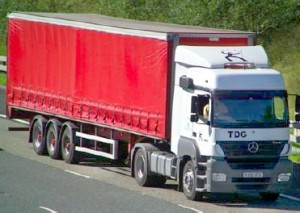The UK’s EU Referendum is now just over a month away and opinion polls suggest that support for the ‘Remain’ and ‘Leave’ campaigns is quite finely balanced. As a so-called Brexit is seen as a real possibility, its implications for different sectors of the economy and society are now receiving greater scrutiny. I would like to reflect briefly on three of the key arguments advanced by the ‘Brexiteers’ from a logistical perspective:
1. The UK has given up too much control of its economy to the EU:
Much of this control has been transferred by company acquisitions rather than government policy, as is well exemplified by the logistics sector. Much of the ownership and control of logistics systems serving the UK now resides outside the country and this will continue whether we are in the EU or not. European logistics conglomerates, such as Deutsche Post DHL, DB Schenker, Kuehne+Nagel and Maersk are major players on the global logistics stage, of which the UK is but a small part. In 2014, the World Bank ranked the UK’s logistics performance 4th in the world, clustered at the top end of the league table, with Germany, the Netherlands and Belgium. Any loss of economic control does not seem to have adversely affected our global standing in logistics.
2. EU regulations are excessively constraining UK business:
The EU ‘subsidiarity’ principle devolves much of the responsibility for freight transport regulation within national borders to individual member states. EU transport regulations relate mainly to cross-border movements, where international standardisation is clearly important, and to fair competition between domestic and foreign-registered carriers, something that benefits UK logistics companies operating in continental Europe. Many British hauliers would actually like greater harmonisation with other EU countries on matters such as fuel duty and truck size and weight limits.
3. The free movement of people in the EU is bringing too many migrants to the UK:
Other EU countries, particularly the eastern European states that have joined since 2003, have been a healthy source of labour for the UK logistics sector. According to the Road Haulage Association, the UK is short of around 45,000 truck drivers. As Barclays-Moore Stephens [1] point out ‘an EU exit could exacerbate the current driver shortage by putting barriers in the way of UK operators using overseas workers’. They offer this as a reason for 92.9% of ‘over a hundred senior decision-makers from across the logistics industry’ that they surveyed wanting the UK to remain in the EU.
In a much larger survey of 676 members of the Chartered Institute of Logistics and Transport [2], 65% believed that ‘those activities encompassing logistics, transport and supply chain will have a stronger future if the UK remains in the EU’ with only 16% disagreeing. This result is hardly surprising. As 45% of the UK’s trade is with the EU and UK supply chains are densely interwoven with those of our EU partners, the logistical case for ‘staying in’ seems to me to be very solid.
1 Barclays-Moore Stephens (2015) ‘The UK Logistics Confidence Index H2 2015’
2 https://ciltuk.org.uk/News/LatestNews/TabId/235/ArtMID/6887/ArticleID/8801







